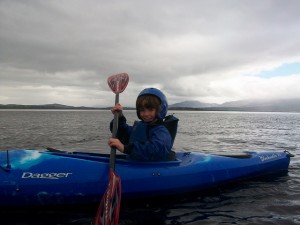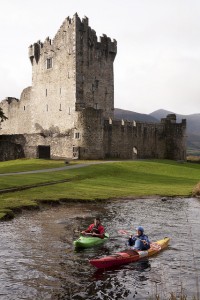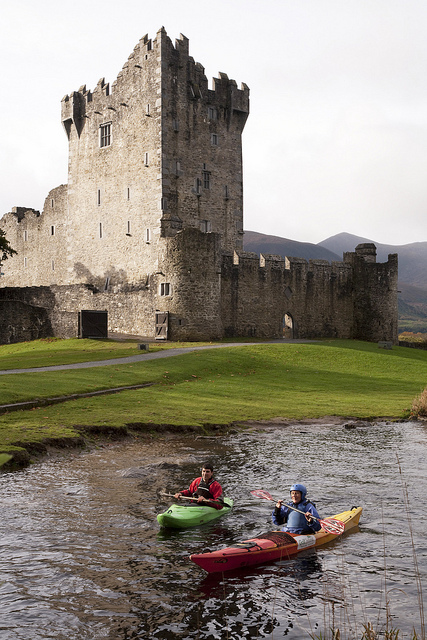
If you think that the Ring of Kerry is just for coachloads of tourists, it’s time to head ‘off piste’ with a man who knows the best shores to paddle off, peaks to conquer, and cliffs to climb Nathan Kingerlee, founder of Outdoors Ireland (outdoorsireland.com), mountain guide and expert rock climber, is also the man who recently wrote a blog about hiking round Ireland with a dog and a goat and, when you’ve read it, you will know that this is the guy to lead you safely up to the summit of Carrauntoohil or, in my case, across Killarney in a kayak.
Before heading off on an all day paddling session, Nathan gave us some kayaking tips on the reed covered shores of Lough Leane and, as a passionate proponent of Leave No Trace (leavenotraceireland.org), he told us to ensure that we did just that on our day on the water. We left Killarney’s tourist filled streets behind and gently paddled out into a totally tranquil lough. It felt like a totally empty lough too, with Nathan saying that the tourist boat traffic stays over on the other side, so we had massive expanses of Kerry water all to ourselves for the rest of the day
With just enough wind to help us across the lough, but also to make us work our muscles when we changed direction, we certainly earned our lunch. We tucked into picnics on the water’s edge, sheltering from a shower on the edge of Tomie’s Woods, followed by a quick walk up to admire O’Sullivan’s Cascade. This stretch of ancient woodland is spectacular, and accessing it by boat might certainly have been a better approach for some man who, according to Nathan, got lost for three days in this, some of Kerry’s densest forest. Warmed, re-energised and back in our kayaks, we gently followed the shoreline to the point where the River Laune meets Lough Leane, and took our final glances of the magnificence that is Macgillycuddy’s Reeks from the water, ending with a lash down the rapids leading to Beaufort Castle, with Nathan able to identify each peak, point out nesting eagles, and teach us how to ride the rapids all at the same time, in that multi-tasking outdoorsy way that I am totally in awe of.
Outdoors Ireland is part of a network of Kerry businesses to have joined the Green Tourism Business Scheme (GTBS), a UK certification scheme brought in to help them achieve green status as a region. All participants are listed in brochure called The Greener Side of The Ring of Kerry, downloadable free of charge from Discover Ireland. Some are greener than others, however, with Gold award winners like Outdoors Ireland leading the field, and others still at the early stages of green practices with a Bronze award, although this range isn’t clear from the brochure. For my kayaking trip, I chose an accommodation which had been awarded the Gold award, Salmon Leap Farm, a traditional farmhouse b&b just outside

Killarney whose green practices are clearly listed on their website.
The GTBS is now one of the several green certification schemes recognised by Fáilte Ireland, with others including the EU Ecolabel, Greenbox Eco-certification and the Green Hospitality Award. In a land where there are forty shades of green, it sometimes feels as if we are getting as many shades of certification schemes, and I long for the day when Fáilte Ireland and the Northern Ireland Tourist Board agrees on one certification which fits all and which embraces all aspects of sustainable tourism particular to Ireland, including access to low carbon transport facilities and, ultimately, creating a clearer, simpler picture for tourists and businesses alike.
In the meantime, Outdoors Ireland certainly meets the criteria for any gold and green award, with Nathan not only sharing his skills relating to excellent low carbon activities, but also guiding us with an expert knowledge of the local ecosystem. You mightn’t do the whole ‘Ring’ thing with Nathan, but the 24kms of Kerry which I saw from a kayak are some I will never forget. Goodbye Celtic Tiger, hello Celtic climbers and kayakers, where the future is green and raring to go.
An edited version of this article was first published in The Irish Times

